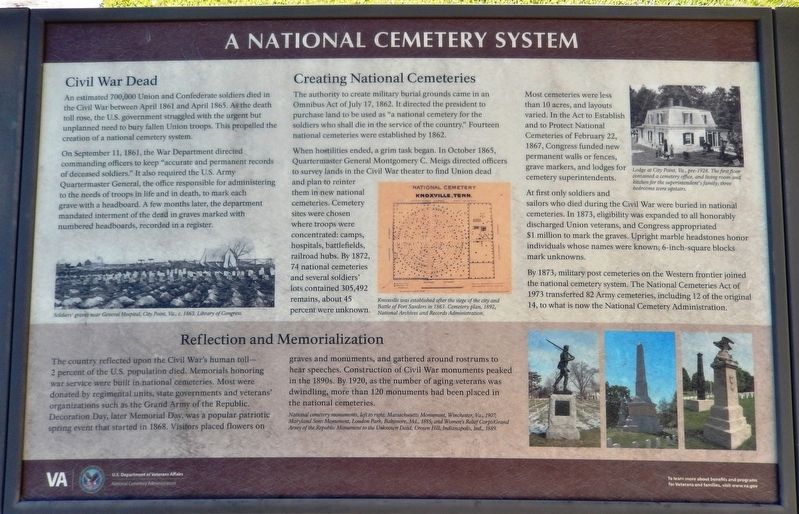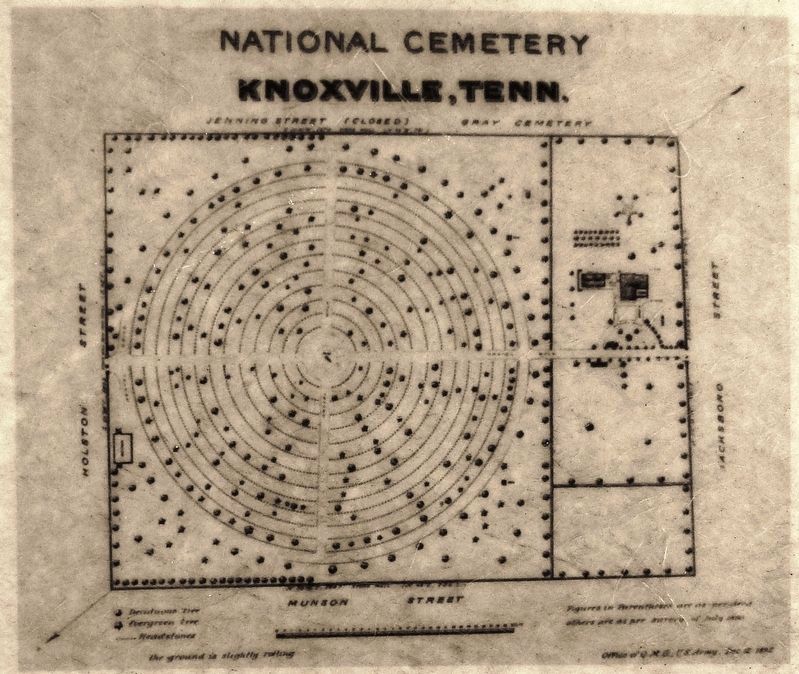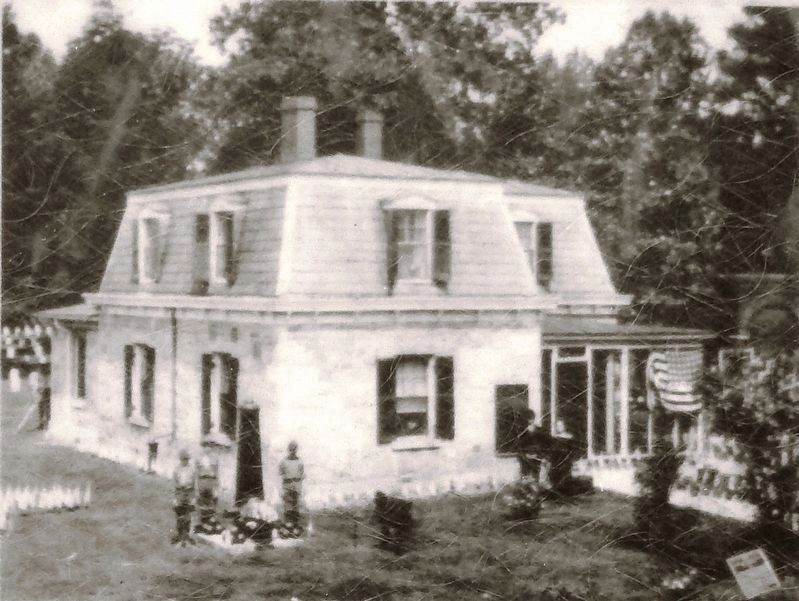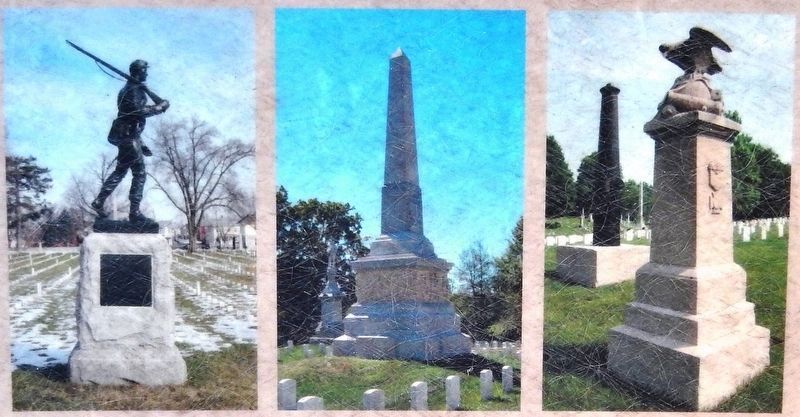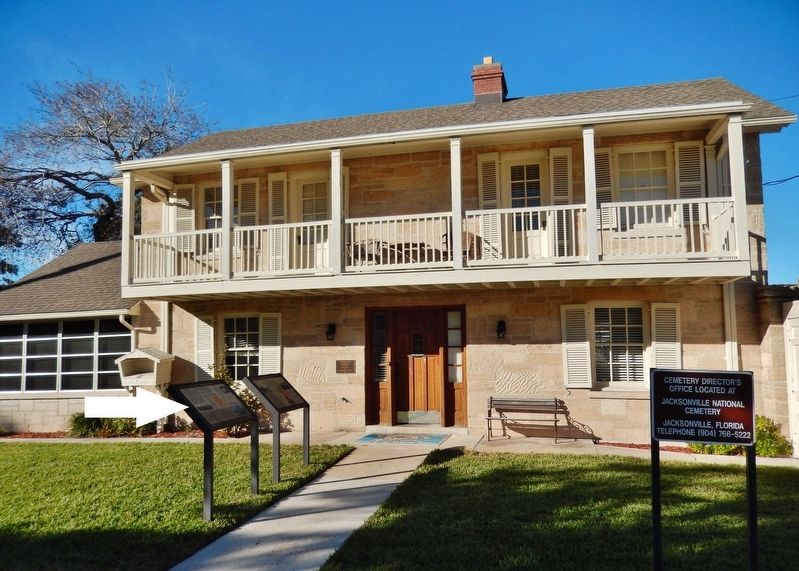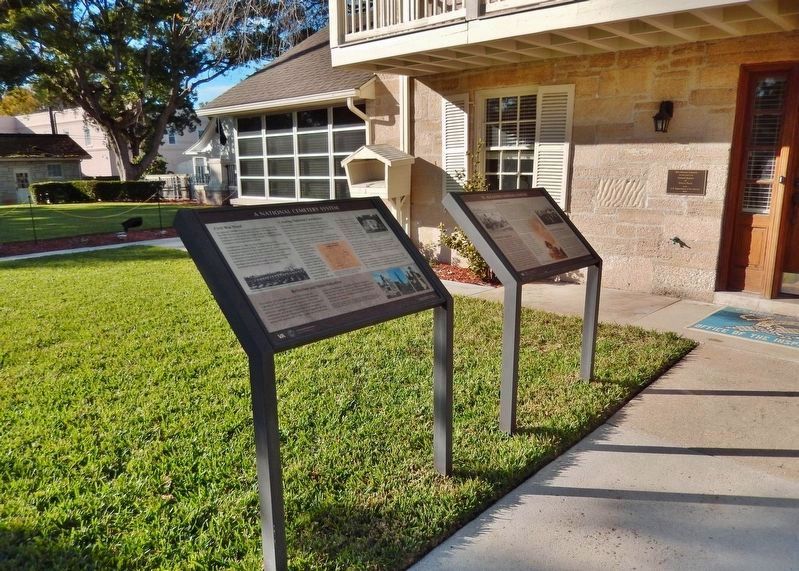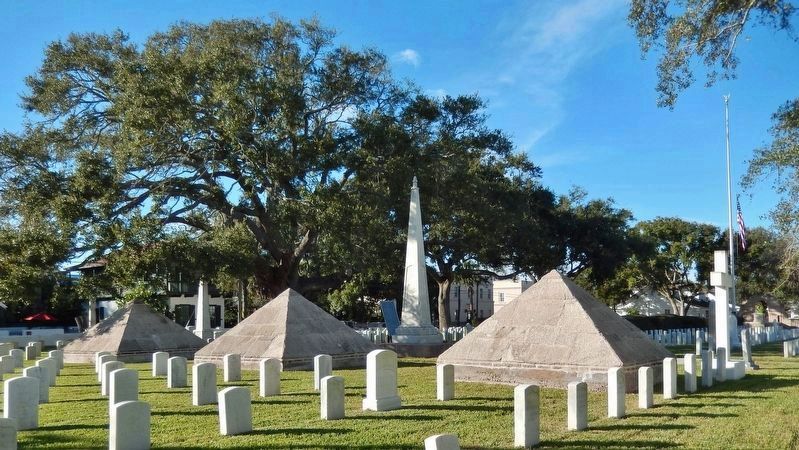St. Augustine in St. Johns County, Florida — The American South (South Atlantic)
A National Cemetery System
Civil War Dead
An estimated 700,000 Union and Confederate soldiers died in the Civil War between April 1861 and April 1865. As the death toll rose, the U.S. government struggled with the urgent but unplanned need to bury fallen Union troops. This propelled the creation of a national cemetery system.
On September 11, 1861, the War Department directed commanding officers to keep “accurate and permanent records of deceased soldiers.” It also required the U.S. Army Quartermaster General, the office responsible for administering to the need of troops in life and in death, to mark each grave with a headboard. A few months later, the department mandated interment of the dead in graves marked with numbered headboards, recorded in a register.
Creating National Cemeteries
The authority to create military burial grounds came in an Omnibus Act of July 17, 1862. It directed the president to purchase land to be used as “a national cemetery for the soldiers who shall die in the service of the country.” Fourteen national cemeteries were established by 1862.
When hostilities ended, a grim task began. In October 1865, Quartermaster General Montgomery C. Meigs directed officers to survey lands in the Civil War theater to find Union dead and plan to reinter them in new national cemeteries. Cemetery sites were chosen where troops were concentrated: camps, hospitals, battlefields, railroad hubs. By 1872, 74 national cemeteries and several soldiers’ lots contained 305,492 remains, about 45 percent were unknown.
Most cemeteries were less than 10 acres, and layouts varied. In the Act to Establish and to Protect National Cemeteries of February 22, 1867, Congress funded new permanent walls or fences, grave markers, and lodges for cemetery superintendents.
At first only soldiers and sailors who died during the Civil War were buried in national cemeteries. In 1873, eligibility was expanded to all honorably discharged Union veterans, and Congress appropriated $1 million to mark the graves. Upright marble headstones honor individuals whose names were known; 6-inch-square blocks mark unknowns.
By 1873, military post cemeteries on the Western frontier joined the national cemetery system. The National Cemeteries Act of 1973 transferred 82 Army cemeteries, including 12 of the original 14, to what is now the National Cemetery Administration.
Reflection and Memorialization
The country reflected upon the Civil War's human toll—2 percent of the U.S. population died. Memorials honoring war service were built in national cemeteries. Most were donated by regimental units, state governments and veterans'
organizations such as the Grand Army of the Republic. Decoration Day, later Memorial Day, was a popular patriotic spring event that started in 1868. Visitors placed flowers on graves and monuments, and gathered around rostrums to hear speeches. Construction of Civil War monuments peaked in the 1890s. By 1920, as the number of aging veterans was dwindling, more than 120 monuments had been placed in the national cemeteries.
Erected by U.S. Department of Veterans Affairs, National Cemetery Administration.
Topics and series. This historical marker is listed in these topic lists: Cemeteries & Burial Sites • War, US Civil. In addition, it is included in the National Cemeteries series list.
Location. 29° 53.183′ N, 81° 18.569′ W. Marker is in St. Augustine, Florida, in St. Johns County. Marker is on Marine Street, 0.1 miles south of St. Francis Street, on the right when traveling south. Marker is located in front of the St. Augustine National Cemetery administration office. Touch for map. Marker is at or near this postal address: 104 Marine Street, Saint Augustine FL 32084, United States of America. Touch for directions.
Other nearby markers. At least 8 other markers are within walking distance of this marker. St. Augustine National Cemetery (here, next to this marker);
Major Dade and His Command Monuments (a few steps from this marker); Never Forget Garden (within shouting distance of this marker); King's Bakery (within shouting distance of this marker); St. Francis Barracks (within shouting distance of this marker); Florida’s First Muster Site (within shouting distance of this marker); Address by President Lincoln (within shouting distance of this marker); Dade Pyramids (within shouting distance of this marker). Touch for a list and map of all markers in St. Augustine.
Related markers. Click here for a list of markers that are related to this marker. St. Augustine National Cemetery
Also see . . .
1. United States National Cemetery System. The United States National Cemetery System is a system of 147 nationally important cemeteries in the United States. The authority to create military burial places came during the American Civil War, in an act passed by the U.S. Congress on July 17, 1862. By the end of 1862, 14 national cemeteries had been established. A national cemetery is generally a military cemetery containing the graves of U.S. military personnel, veterans and their spouses, but not exclusively
so. The best known national cemetery is Arlington National Cemetery in Arlington County, Virginia, outside Washington, D.C.. (Submitted on December 21, 2018, by Cosmos Mariner of Cape Canaveral, Florida.)
2. St. Augustine National Cemetery. Two decades after the Civil War, St. Augustine again flourished and the commander of St. Francis Barracks recognized the need to assure the proper care and respectful treatment of the old post cemetery. That same year, Quartermaster Gen. Montgomery Meigs proposed that "As Florida is now a resort of many thousands of citizens with their families in search of benefit from its mild winter climate, it will only be becoming to put this cemetery, too long neglected and falling lately into decay, into as good condition as the other national cemeteries." The adjutant general concurred, and the post burial grounds were declared a national cemetery. (Submitted on December 22, 2018, by Cosmos Mariner of Cape Canaveral, Florida.)
Credits. This page was last revised on January 2, 2019. It was originally submitted on December 21, 2018, by Cosmos Mariner of Cape Canaveral, Florida. This page has been viewed 291 times since then and 26 times this year. Photos: 1, 2, 3, 4, 5, 6. submitted on December 21, 2018, by Cosmos Mariner of Cape Canaveral, Florida. 7, 8. submitted on December 28, 2018, by Cosmos Mariner of Cape Canaveral, Florida. • Bernard Fisher was the editor who published this page.
